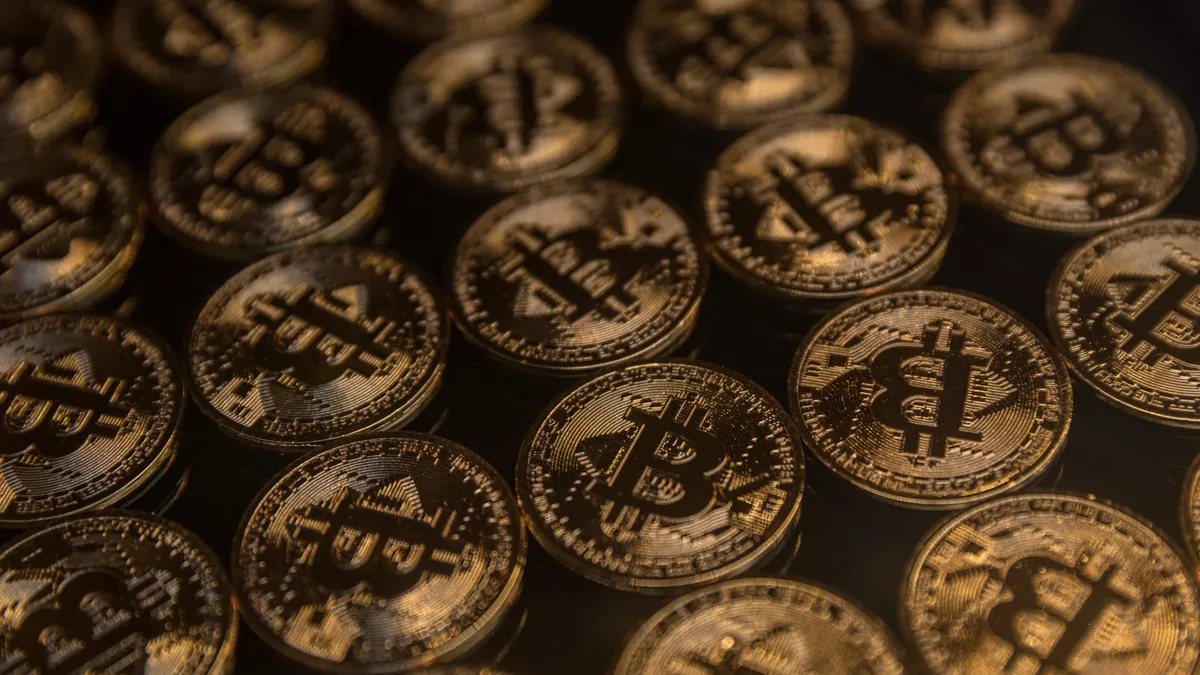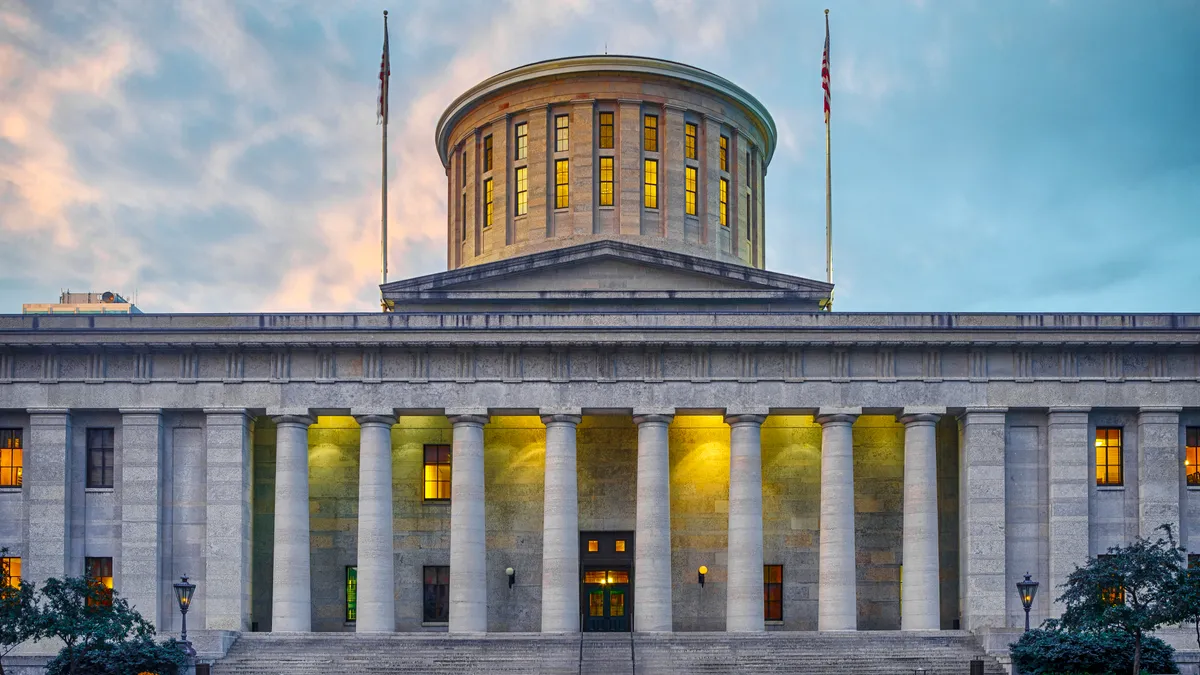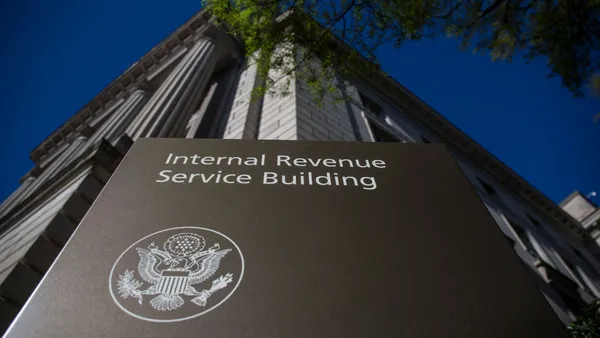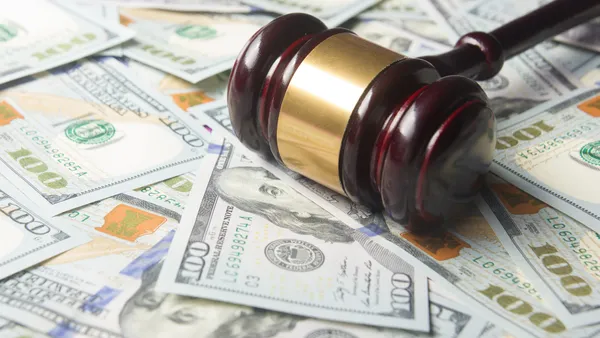Dive Brief:
- An executive order issued by President Donald Trump Thursday bans government agencies from issuing, establishing or promoting central bank digital currencies (CBDCs) unless required by law, defining such currencies as “a form of digital money or monetary value, denominated in the national unit of account, that is a direct liability of the central bank.”
- The move fulfills a campaign promise by Trump, who pledged that if elected he would bar agencies such as the Federal Reserve from creating a digital currency in favor of support for “decentralized” digital currencies such as Bitcoin, according to a 2024 report by Politico.
- The order also establishes a presidential working group aimed at creating “regulatory clarity” for the digital asset space, to be led by “White House AI & Crypto Czar” and PayPal alum David Sacks. Among other actions, the group will explore the potential creation of a national stockpile of digital assets.
Dive Insight:
The move is the latest attempt by Trump to woo the cryptocurrency industry in the early days of his presidency, following his nomination of crypto-friendly leadership in agencies such as the Securities and Exchange Commission. Trump also declared his intent to make the U.S. the “world capital of artificial intelligence and crypto” in a televised speech to the World Economic Forum on Thursday.
Trump’s Thursday executive order revokes a Biden-era 2022 order to explore the role of digital assets, which includes CBDCs, in the financial system, according to a breakdown by Gibson Dunn.
“President Trump's executive order marks a pivotal moment in the evolution of digital financial technology, rejecting CBDCs and instead advocating for decentralized digital assets and private sector innovation,” Michael Levine, CFO of blockchain and cryptocurrency security platform Fireblocks told CFO Dive in an emailed statement. “By prioritizing privacy and opposing what some see as the 'money surveillance' risks associated with CBDCs, the administration is signaling a commitment to economic liberty and fostering trust in blockchain-based solutions.”
The bar on issuing CBDCs is probably “the most pointed statement” included within the executive order, Miles Fuller, senior director, public sector operations for digital asset tax and accounting service provider Taxbit told CFO Dive — sending a clear message that the U.S. will not create a digital currency backed by the central bank.
For CFOs and other business leaders, the order also makes it clear crypto is an area where leadership needs to be paying careful attention — whether they have utilized or eschewed digital assets, he said.
“Maybe I can stop avoiding crypto because the uncertainty is going to go away,” Fuller said of business leaders in an interview. “Or if we were already doing stuff with crypto, maybe some regulations will come out that'll change compliance requirements. And so we need to be aware of those. How are things going to be different?”
One of the positives coming out of the order is the creation of a dedicated working group aimed at cutting through some of cryptocurrency’s murkier areas.
“It's exciting to see the appointment of a very dedicated working group to resolve some of what have been for the past number of years, friction points in the crypto space,” Fuller said.
Such friction points include an ongoing tug-of-war surrounding multiple definitions of digital assets — including what counts as a security, commodity, or currency — as well as the accounting and tax standards for such assets. Also on Thursday, the SEC revoked a Biden-era rule which directed firms holding such assets to record them as liabilities — a rule which drew pushback from industry advocates who argued it discouraged businesses from holding cryptocurrency.
One of the first things the working group could tackle in that vein is providing a definition of so-called “stablecoins,” Fuller said.
The working definition of a “stablecoin” is an asset where its value is tied to another asset, but which are typically issued by private entities rather than central banks, according to a 2023 report by the World Economic Forum. However, that definition is fluid, and is not a regulatory standard; for example, while certain stablecoins are redeemable one-to-one with currencies such as the U.S. dollar, others keep their value steady algorithmically and are not redeemable, Fuller said.
“This is where I think the government needs to come in and say, ‘what is the actual definition,’” of a stablecoin, Fuller said.
While the Treasury Department has offered some guidelines for such assets and government leaders such as Sens. Kirsten Gillibrand (D-N.Y.) and Cynthia Lummis (R-Wyo.) have introduced legislation on the subject, the U.S. currently lacks a formal framework for such assets.
As part of its mandate, the presidential working group will “propose a Federal regulatory framework governing the issuance and operation of digital assets, including stablecoins, in the United States,” according to the executive order. “The Working Group’s report shall consider provisions for market structure, oversight, consumer protection and risk management.”














